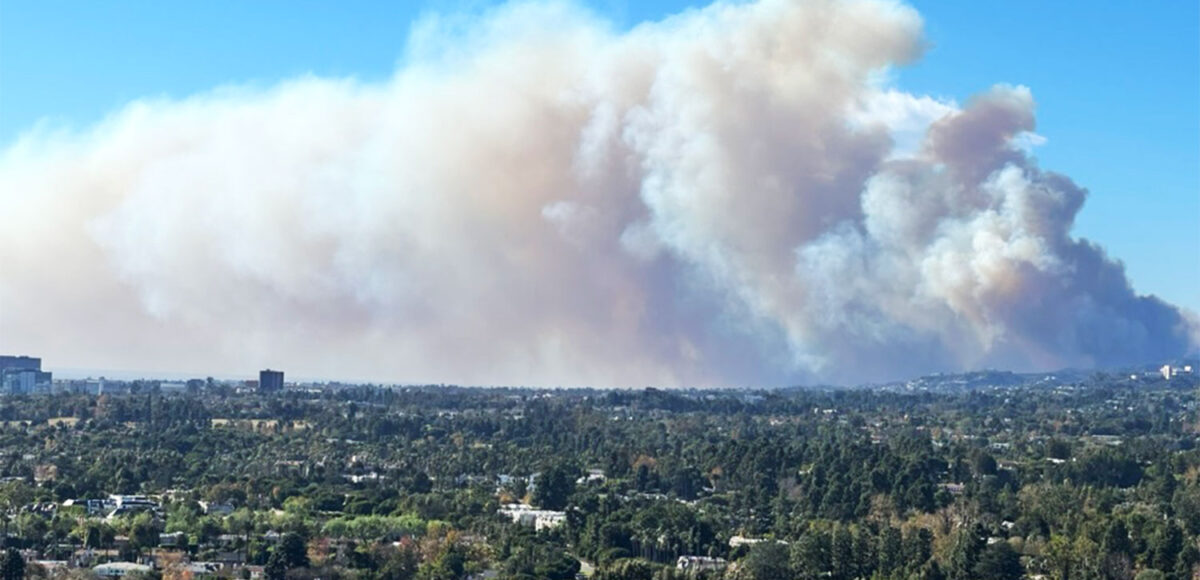In an effort to inspire a conversation about the issues facing homeowners—especially after the recent wildfires—the Courier is launching this Real Estate Opinion page. The inaugural entry by Melody Avecilla focuses on California’s insurance market.
California’s insurance marketplace is in turmoil—and there is no denying it. From rising premiums to fewer carriers, many homeowners are left questioning: why is this happening, and how long will it last? To understand the full picture, we need to peel back the layers and examine three main factors: wildfire risks, regulatory constraints, and economic pressures.
1. Wildfire Risks and Catastrophic Losses
California has long battled wildfires, but recent years have seen these disasters reach record-breaking levels. Wildfires have become more frequent, intense, and destructive, largely due to climate change, droughts, and forest mismanagement. Hotter temperatures, prolonged droughts, and stronger winds have lengthened fire seasons, creating the perfect storm for catastrophic fires.
Look at some of the most damaging fires in recent history. The Cedar Fire (2003) and Witch Fire (2007) in San Diego County caused billions in damages, prompting insurers to reassess their exposure in fire-prone areas. The 2017-2018 wildfires were especially catastrophic, with the Camp Fire (2018) wiping out the entire town of Paradise and causing over $16 billion in insured losses.
And just last month, the Pacific Palisades fire made headlines for its scale. This fire burned 23,448 acres and destroyed over 6,800 structures in Pacific Palisades, Malibu, and Topanga—further straining insurance reserves and drawing more attention to the risks insurers face.
2. Regulatory Constraints: The Role of Prop 103
One unique element that exacerbates the crisis is California’s Proposition 103, a consumer protection measure passed by voters in 1988. The law requires insurance companies to seek approval from the California Insurance Commissioner before raising rates. While the intent is to prevent rapid rate hikes, the system has its consequences.
In practice, insurers often face long delays before their rate requests are reviewed. During the 2021-2022 period, some insurers had to wait over two years for rate hikes, leaving them operating at a loss. The inability to adjust rates quickly enough, combined with mounting claims, has led many insurers to exit the state entirely. As a result, close to 70% of major carriers have left California, pushing remaining insurers to increase premiums for those who stay.
This regulatory logjam has also contributed to the rise of the California FAIR Plan, the state’s insurance of last resort. With more homeowners turning to the FAIR Plan for coverage, its market share has grown dramatically, from about 127,000 policies in 2023 to over 400,000 policies. The FAIR Plan, however, faces its own financial dilemma.
3. Economic Pressures: Rising Costs and Reinsurance
Economic pressures also play a significant role in the current crisis. Rising construction costs due to inflation, supply chain disruptions, and labor shortages have driven up the cost of home repairs and rebuilding. Insurers are finding that their policies are underpriced compared to the actual costs of rebuilding homes after disasters.
Moreover, insurance fraud, legal expenses, and skyrocketing reinsurance costs have made it even harder for carriers to stay afloat. While insurers need to charge more to cover these rising costs, the regulatory environment slows down their ability to adjust premiums in time.This mismatch between pricing and expenses only adds to the pressure on insurers.
Where We Are Now
The situation is fragile. While regulatory reforms are being discussed, progress has been slow. Insurance companies continue to struggle, and homeowners are facing higher premiums and fewer choices. The market is delicate, and with the right changes and adjustments, there’s of course a strong possibility for improvements. From here on out, things can only improve.
What Needs to Happen?
Several reforms are needed to stabilize California’s insurance marketplace:
Revise Prop 103: The state may need to allow insurers to use predictive catastrophe modeling (as other states do) rather than relying on outdated historical data. This could help insurers better assess rising risks due to climate change and wildfires.
Restructure the FAIR Plan: The FAIR Plan needs a considerable overhaul. This could involve increasing coverage limits (currently capped at $3 million) and providing moresustainable solutions for homeowners seeking coverage.
Public-Private Partnerships: One potential solution is a public-private partnership that helps share the financial risks between the state and private insurers. This could helpstabilize the market and reduce the burden on individual carriers.
Final Thoughts
The root of California’s insurance crisis is clear: a mix of outdated regulations and rising wildfire risks. Until the state can find a way to balance consumer protection with insurer profitability, the situation is unlikely to improve. Homeowners should brace for continued premium hikes, potentially ranging from double to quadruple or much more than what they’re currently paying.
For those with homes valued over $5 million, it’s crucial to start shopping around for insurance quotes early—allowing 3–4 days or preferably longer to gather quotes. Note however that most carriers will not give quotes earlier than 60 days before policy renews. It is crucial to work with an experienced insurance broker to navigate these challenging waters.
Is There Hope?
Despite the significant challenges, there is a glimmer of hope. Talks are underway to modernize the insurance rating, and with the right reforms, a more balanced and resilient marketplace could emerge. However, the timeline for these changes is uncertain, and the ultimate cost remains to be seen.
For now, Californians must remain vigilant, aware that the road to recovery may be arduous—but with collective effort, progress is on its way. Stay informed, stay prepared and know that better days must be on the horizon.
Melody Avecilla, MBA, is an insurance expert with more than 20 years’ experience specializing in high-value residential properties. She is the principal agent and president of Cost Wise Insurance Center.







